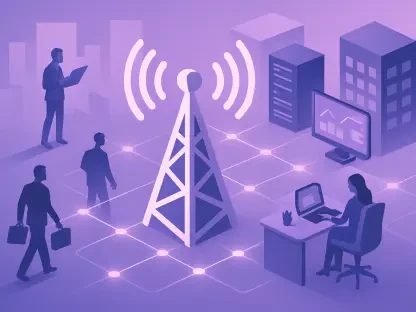Environmental sustainability has become a critical focus for businesses worldwide. As companies strive to reduce their environmental impact, they face numerous challenges and opportunities. This article explores the progress made, the obstacles encountered, and the key factors necessary to drive further improvements in sustainability within the business sector.
Progress in Sustainability Efforts
Advancements in Environmental Practices
Over the past few years, many organizations have made significant strides in their sustainability efforts, implementing measures to reduce greenhouse gas emissions, eliminate toxic substances, adopt sustainable packaging, and upgrade to energy-efficient infrastructure. According to IDC’s Sustainability Readiness Index Survey of August 2024, about 32% of companies have developed strategic roadmaps for sustainability, while 26% have started integrating sustainability into their operations, and 20% consider it the “new normal.” This indicates that sustainability is becoming a core component of business strategies, especially among C-suite executives. These advancements show a trend towards greater environmental responsibility and a proactive stance in addressing climate change within the corporate sector.
Integration of Sustainability into Business Operations
The integration of sustainability into business operations is a complex process that requires a comprehensive approach. Companies are increasingly recognizing the importance of embedding sustainability into their organizational culture and decision-making processes. This involves not only setting ambitious sustainability goals but also ensuring that these goals are reflected in everyday business practices. The shift towards sustainability is evident in various sectors, with companies investing in renewable energy, sustainable supply chains, and eco-friendly products. By fostering a culture that values environmental stewardship, businesses can create lasting impacts that extend beyond short-term gains, leading to more resilient and sustainable business models.
Challenges in Data Collection, Sharing, and Reporting
The Importance of Comprehensive Data
One of the most significant challenges in achieving environmental sustainability is the collection, sharing, and reporting of comprehensive data. Accurate and reliable data is essential for measuring progress, identifying areas for improvement, and making informed decisions. However, many organizations struggle with data collection, particularly when it comes to integrating insights from disparate platforms. In the European Union, 75% of organizations are still in the early stages of data collection, as highlighted by IDC’s Future Enterprise Resiliency and Spending Survey in April 2023. Without comprehensive data, companies find it difficult to ensure transparency and accountability in their sustainability initiatives, which is critical for both internal evaluations and meeting regulatory requirements.
Overcoming Data Integration Hurdles
To operationalize a carbon-neutral strategy, businesses need end-to-end visibility of climate data. This requires robust IT systems capable of integrating data from various sources to provide accurate inputs for decision-making. By 2025, it is predicted that 60% of Global 2000 organizations will have formed cross-ecosystem sustainability teams to share relevant data and practices effectively. These teams will play a crucial role in overcoming data integration hurdles and driving sustainability initiatives forward. By leveraging technology that allows for real-time data sharing and analysis, companies can enhance their ability to manage and reduce their carbon footprint more effectively, paving the way for more transparent and actionable sustainability practices.
Economic Uncertainty and Sustainability Commitment
Navigating Economic Fluctuations
Economic uncertainty, characterized by fluctuating energy prices, inflation, and geopolitical tensions, poses significant challenges for businesses. Despite these uncertainties, many organizations remain committed to their sustainability goals. IDC’s CIO Sentiment Survey from July 2024 found that 75% of organizations intend to either maintain or accelerate their sustainability endeavors, indicating a robust commitment to such initiatives even in unpredictable economic environments. This steadfast approach to sustainability highlights a growing recognition that environmental stewardship is not only a moral imperative but also a business necessity in an increasingly eco-conscious market.
Balancing Sustainability and Economic Viability
Balancing sustainability and economic viability is a delicate act. Companies must ensure that their sustainability initiatives are financially sustainable and provide a measurable return on investment (ROI). This requires strong leadership, comprehensive data, and a clear understanding of the long-term benefits of sustainability. By aligning sustainability goals with business objectives, companies can achieve both environmental and economic success. Comprehensive planning and strategic investment in sustainable technologies can lead to cost savings, reduce regulatory risks, and enhance brand reputation, thereby reinforcing the business case for sustainability even during economic downturns.
Pursuit of Measurable Results
Achieving Tangible Outcomes
For sustainability efforts to be effective, they must yield measurable results. This involves setting clear targets, tracking progress, and making necessary adjustments to achieve desired outcomes. Companies need to invest in technologies and processes that enable them to measure the impact of their sustainability initiatives accurately. This includes monitoring energy consumption, waste reduction, and carbon emissions. Implementing robust measurement systems allows organizations to not only comply with regulatory requirements but also to showcase their achievements and set benchmarks for continuous improvement, thereby fostering trust among stakeholders, investors, and consumers.
Organizational and Cultural Adjustments
Achieving measurable results in sustainability requires comprehensive organizational and cultural adjustments. Companies need to foster a culture of sustainability, where employees at all levels are committed to environmental goals. This involves providing training, resources, and incentives to encourage sustainable practices. Strong leadership is essential to drive these changes and ensure that sustainability remains a priority across the organization. By integrating sustainable values into corporate culture, businesses can inspire employees to take active roles in sustainability projects, enhancing overall engagement and fostering a collective effort towards achieving significant environmental impacts.
Managing Scope 3 Emissions
The Complexity of Scope 3 Emissions
Scope 3 emissions, which constitute 60% to 95% of most organizations’ total carbon footprint, are particularly challenging to manage. These emissions arise from indirect activities across the value chain, making them more difficult to monitor and control than Scope 1 and Scope 2 emissions. High-quality data is crucial for accurately measuring and managing Scope 3 emissions. Tracking these emissions often requires collaboration with suppliers and other third parties, which adds layers of complexity. Companies must develop innovative approaches to gather and analyze data from across their entire value chain to get a complete picture of their environmental impact.
Strategies for Reducing Scope 3 Emissions
To effectively reduce Scope 3 emissions, companies need to collaborate with suppliers, customers, and other stakeholders across the value chain. This involves setting clear expectations, providing support, and leveraging technology to track and reduce emissions. By working together, businesses can achieve significant reductions in their overall carbon footprint and contribute to broader sustainability goals. Creating transparent supply chain networks supported by digital tracking tools can help monitor emissions in real-time and uncover areas where further improvements can be made. Additionally, fostering strong relationships and partnerships with stakeholders can enhance coordinated efforts towards a more sustainable future.
Navigating Regulatory Changes
The Evolving Regulatory Landscape
Environmental sustainability has become a crucial focus for businesses across the globe. With growing awareness of climate change and environmental degradation, companies are making concerted efforts to lessen their ecological footprint. These initiatives bring a blend of challenges and opportunities. Businesses have made notable strides in adopting green technologies, reducing waste, and promoting renewable energy. However, they also face significant hurdles such as high initial costs, regulatory complexities, and the need for fundamental shifts in corporate culture. To drive further improvements in sustainability, it is essential for businesses to integrate sustainable practices into their core strategies. This involves investing in research and development for cleaner technologies and fostering a culture of innovation. Collaboration with governments, NGOs, and other stakeholders is also vital to create favorable policies and share best practices. Employee engagement and consumer awareness play crucial roles in sustaining these efforts. In conclusion, while businesses have made commendable progress in environmental sustainability, ongoing commitment, innovation, and collaboration are key to overcoming obstacles and achieving even greater progress.









